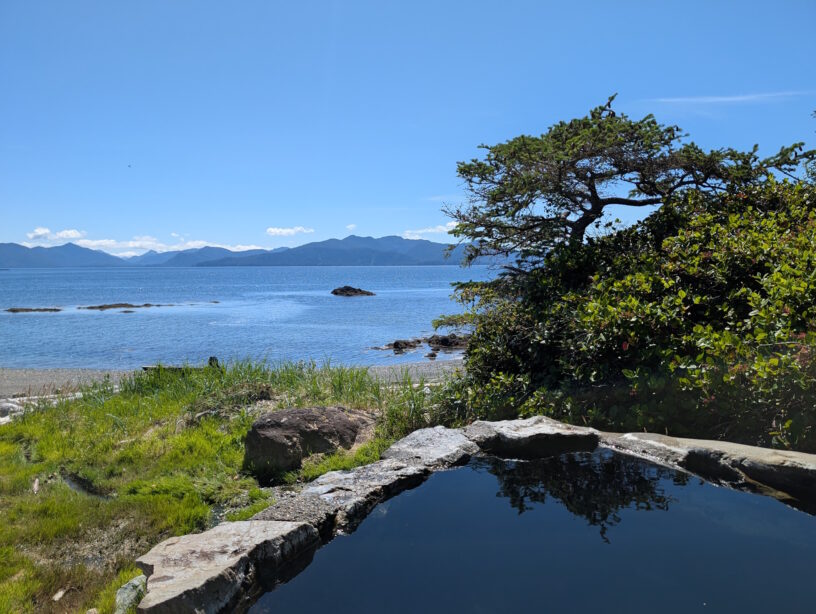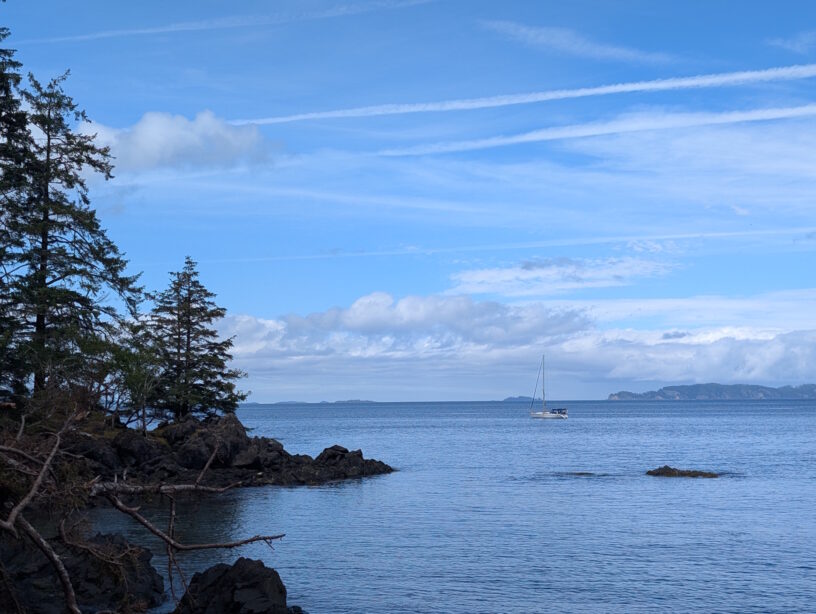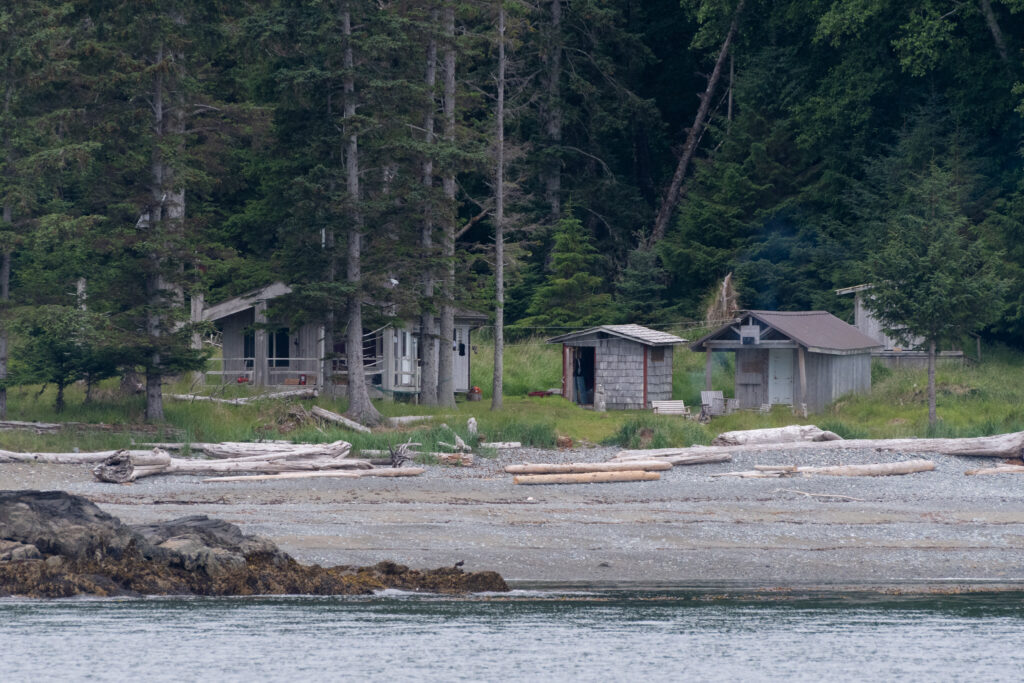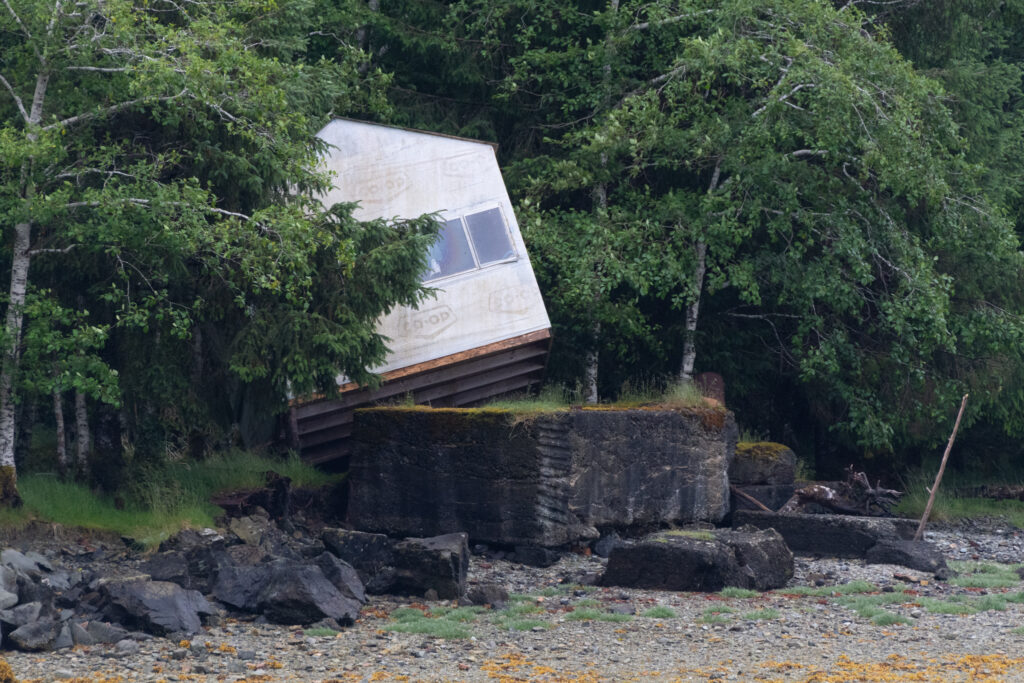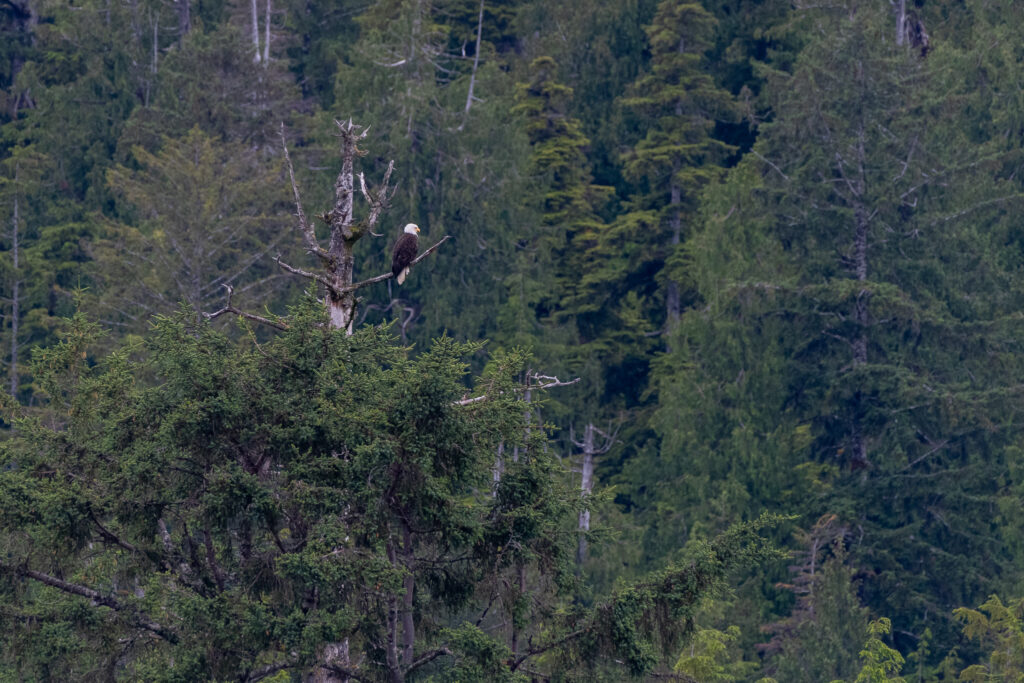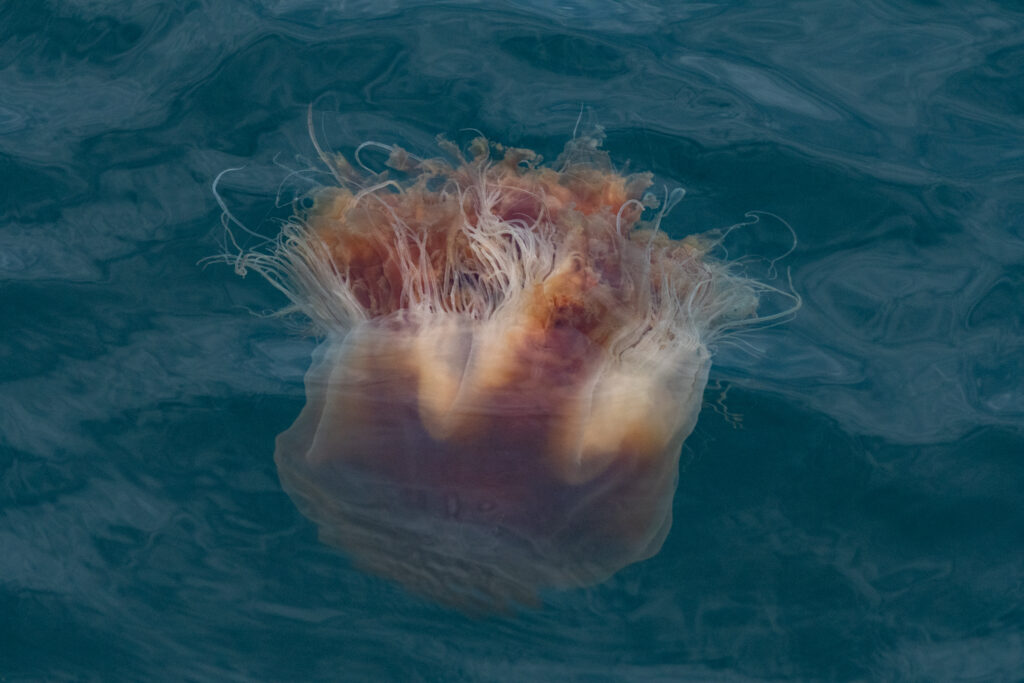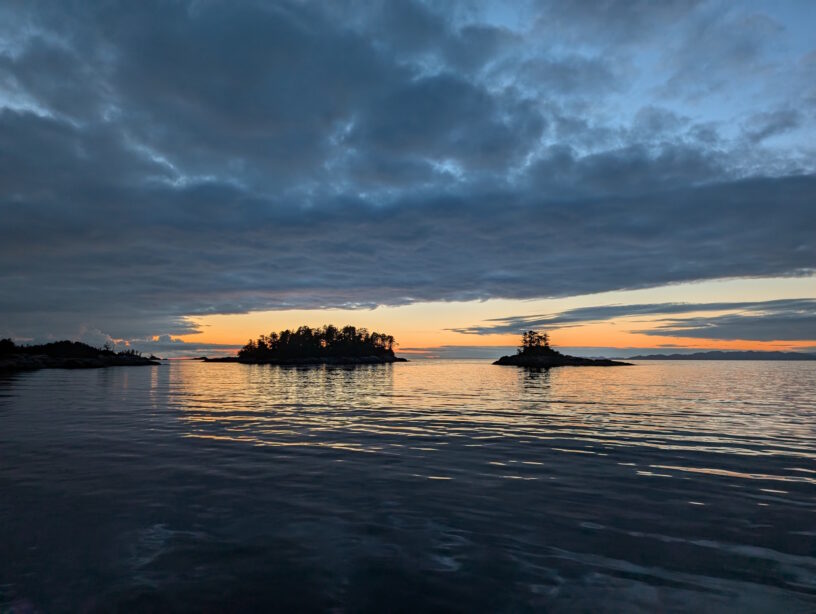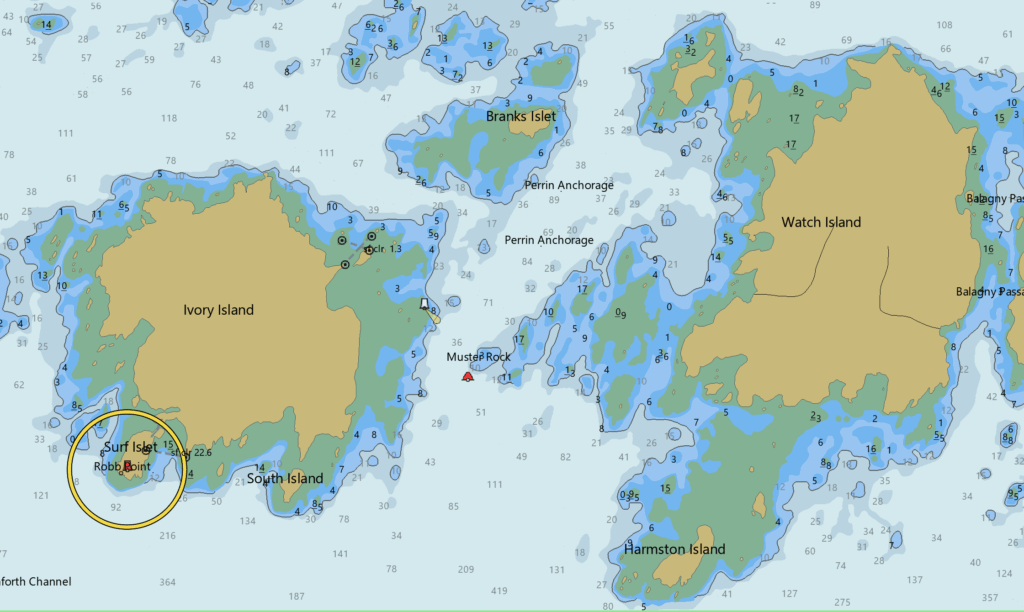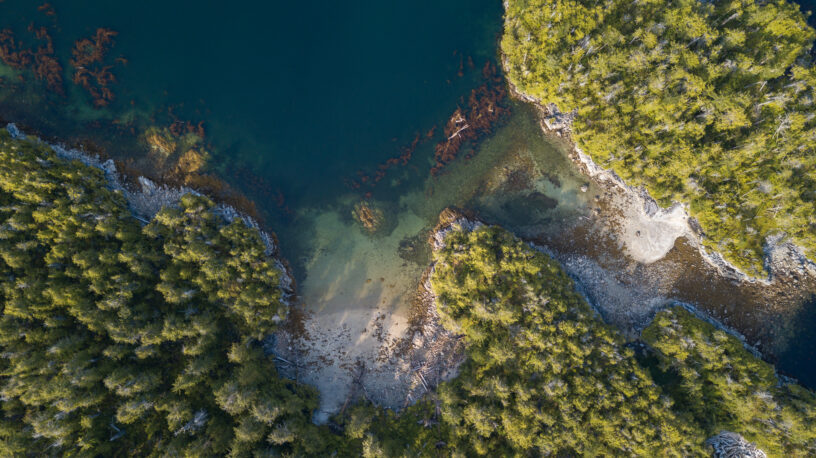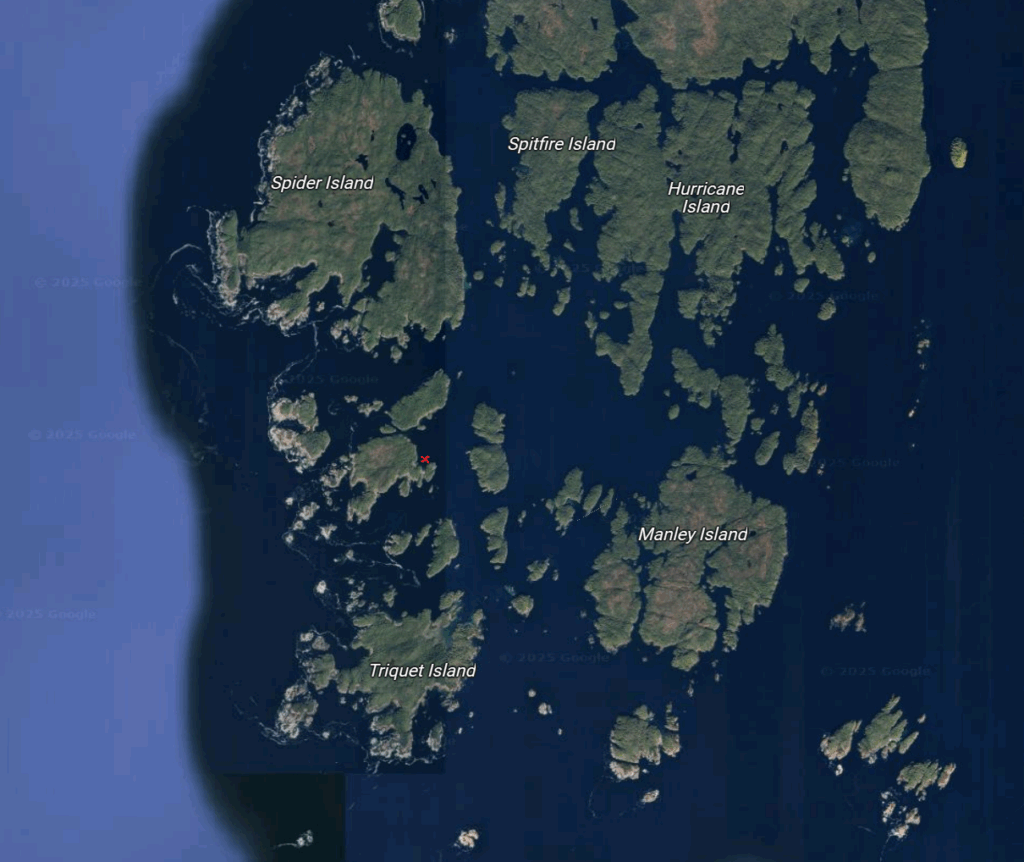Around noon on Monday, we took Kestrel the mile across the channel to the eastern “anchorage” for G̱andll K’in Gwaay.yaay (Hotspring Island), between it and the restricted ground of House Island. While the depths are reasonably shallow, it isn’t very protected, and despite solid holding, we had small rollers coming through the gap between the islands from the northeast the entire time. The time slot we’d been given by the Watchmen was for 2pm, so we made lunch and relaxed before taking our dinghy Shrike to shore and walking the short hike to the Watchmen’s cabin built near the hot springs.
With three hot springs, all three a gradation of different temperatures, you’ve got options. After a (not cold!) shower we were given all the time we wanted, though we did need to keep in mind the tides, because while we’d set Shrike’s anchor high up the beach we’d landed on, we didn’t want to risk anything with the large incoming tide. The hot springs were wonderful, with both of us spending most of our time in the least hot one. I spent a fair bit of time in the one in the middle of the scale, though it was too hot for my partner to want to spend more than a minute in, and the hottest one was too hot for me to even keep my feet in for more than a few seconds. After the past few months of travel, heating and loosening up my muscles was a bit relief. The view was just as good.
Continue reading
